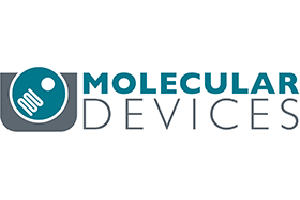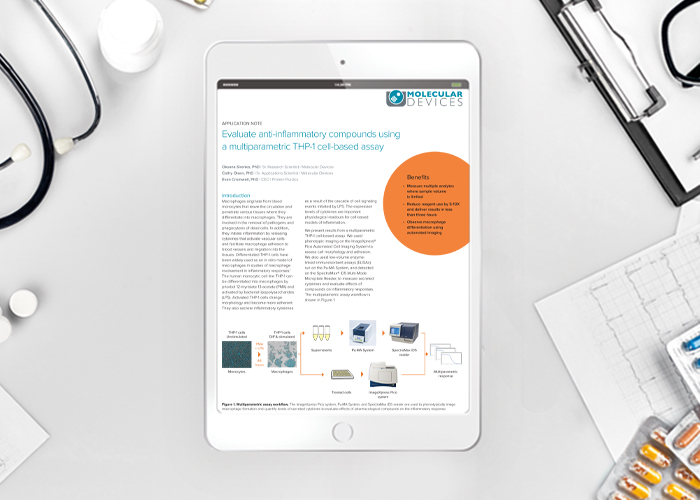Application note: Evaluate anti-inflammatory compounds using a multiparametric THP-1 cell-based assay
Posted: 18 October 2019 | Molecular Devices | No comments yet
Macrophages originate from blood monocytes that leave the circulation and penetrate various tissues where they differentiate into macrophages. They are involved in the removal of pathogens and phagocytosis of dead cells. In addition, they initiate inflammation by releasing cytokines that activate vascular cells and facilitate macrophage adhesion to blood vessels and migration into the tissues.
Differentiated THP-1 cells have been widely used as an in vitro model of macrophages in studies of macrophage involvement in inflammatory responses.1 The human monocytic cell line THP-1 can be differentiated into macrophages by phorbol 12-myristate 13-acetate (PMA) and activated by bacterial lipopolysaccharides (LPS). Activated THP-1 cells change morphology and become more adherent. They also secrete inflammatory cytokines as a result of the cascade of cell signaling events initiated by LPS. The expression levels of cytokines are important physiological readouts for cell-based models of inflammation.
In this application note, Molecular Devices present the results of a multiparametric THP-1 cell-based assay to assess cell morphology and adhesion, measure secreted cytokines, and evaluate effects of compounds on inflammatory responses.
Related content from this organisation
Related topics
Assays, Cell-based assays, Cytokines, Imaging, In Vitro
Related organisations
Molecular Devices









